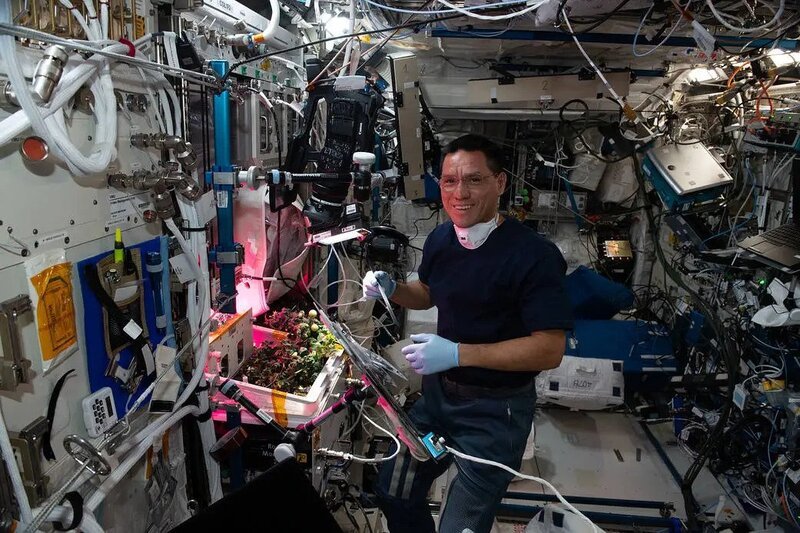The Great Space Tomato Lost and Found!
 |
| Astronaut Frank Rubio checks tomato plants growing inside the International Space Station for the XROOTS space botany study. (Credit: NASA) |
The tomato, which had been hurling through the zero-gravity environment of the International Space Station (ISS), was finally located by the diligent astronauts on board. The discovery was announced by NASA astronaut Jasmin Moghbeli during an event celebrating the 25th anniversary of the ISS.
“Our good friend Frank Rubio who headed home has been blamed for quite a while for eating the tomato, but we can exonerate him,” she said. It seems the tomato had simply decided to take an extended tour of the ISS, much to the relief of Rubio, who had been the subject of some light-hearted accusations.
The tomato was part of NASA’s Veg-05 experiment, designed to establish a system that supplies astronauts with fresh, healthy food during their time aboard the ISS. The tomato’s eight-month adventure has certainly added a new dimension to the experiment!
In related news, this isn’t the first time astronauts have misplaced items on the ISS. Last month, a tool bag was dropped during repairs to the station. Unlike the tomato, however, the tool bag was deemed not worth the effort to retrieve and remains in the Earth’s atmosphere.
So, the next time you misplace something, remember: at least you’re not trying to find a tomato in space!
NASA

